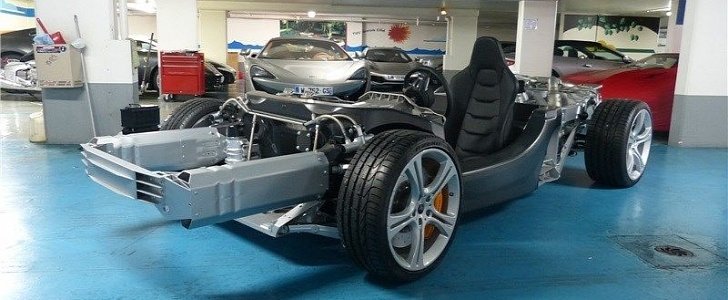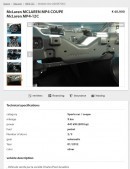When the Ford Model T started production in 1908, the first affordable passenger car in the world had popularized something other automakers have reluctantly adopted in the following decades. That something is mass production, a time- and cost-efficient technique facilitated by the moving assembly line.
More than a century after the T revolutionized the industry, even extremely exotic and overly complicated cars are built on a moving assembly line. This also applies to McLaren, who stepped into the 21st century with the 12C.
Produced between 2011 and 2014, the first road-going McLaren offered for sale after the F1 hypercar of the 1990s paved the way to today’s Sports Series (5xx models), Super Series (6xx models), and Ultimate Series (P1). Built around a one-piece carbon fiber tub that weighs approximately 176 pounds (80 kilos), the McLaren 12C was ahead of its time in more than one way.
The suspension, for example, boasts dampers that are interconnected hydraulically. This setup allows quick adaptive responses than a regular suspension system, a triumph of engineering over physics. For all intents and purposes, the chassis of the McLaren 12C is a technological marvel.
On the go-faster front, the M838T 3.8-liter twin-turbo V8 engine is good for 592 horsepower (600 PS) and 443 lb-ft (601 Nm) of torque. That’s a lot of get-up-and-go for a car that tips the scales at 3,161 pounds (1,434 kilos).
Now imagine how that output and chassis technology feels like without body panels, dashboard, sound insulation or a passenger seat. Indeed, the rolling chassis of a McLaren 12C has a lot of potential. Somewhere in France, somebody will sell you exactly that in exchange for €40,900 (~$46,000).
The question is, what sort of body shell would you dress up this rolling chassis in? If you ask me, I’d go for an old Volvo. The explanation for my choice is simple: the 105-inch (2,670-mm) wheelbase is the most inhibiting factor.
The first-generation Volvo V70 station wagon with a wheelbase of 104.9 inches (2,664 mm) in FWD specification would be my wrapping paper of choice. Other potential candidates, chosen solely on the basis of wheelbase, are the 1984 Cadillac Citation and 1978 Ford Fairmont. Now ignore the limitations of the wheelbase and imagine how purist-irritating it would be to bolt on the body shell from a Ferrari 488 GTB on top of this 12C’s backbone.
These said, tell us what you would go for in the comments section.
Produced between 2011 and 2014, the first road-going McLaren offered for sale after the F1 hypercar of the 1990s paved the way to today’s Sports Series (5xx models), Super Series (6xx models), and Ultimate Series (P1). Built around a one-piece carbon fiber tub that weighs approximately 176 pounds (80 kilos), the McLaren 12C was ahead of its time in more than one way.
The suspension, for example, boasts dampers that are interconnected hydraulically. This setup allows quick adaptive responses than a regular suspension system, a triumph of engineering over physics. For all intents and purposes, the chassis of the McLaren 12C is a technological marvel.
On the go-faster front, the M838T 3.8-liter twin-turbo V8 engine is good for 592 horsepower (600 PS) and 443 lb-ft (601 Nm) of torque. That’s a lot of get-up-and-go for a car that tips the scales at 3,161 pounds (1,434 kilos).
Now imagine how that output and chassis technology feels like without body panels, dashboard, sound insulation or a passenger seat. Indeed, the rolling chassis of a McLaren 12C has a lot of potential. Somewhere in France, somebody will sell you exactly that in exchange for €40,900 (~$46,000).
The question is, what sort of body shell would you dress up this rolling chassis in? If you ask me, I’d go for an old Volvo. The explanation for my choice is simple: the 105-inch (2,670-mm) wheelbase is the most inhibiting factor.
The first-generation Volvo V70 station wagon with a wheelbase of 104.9 inches (2,664 mm) in FWD specification would be my wrapping paper of choice. Other potential candidates, chosen solely on the basis of wheelbase, are the 1984 Cadillac Citation and 1978 Ford Fairmont. Now ignore the limitations of the wheelbase and imagine how purist-irritating it would be to bolt on the body shell from a Ferrari 488 GTB on top of this 12C’s backbone.
These said, tell us what you would go for in the comments section.











